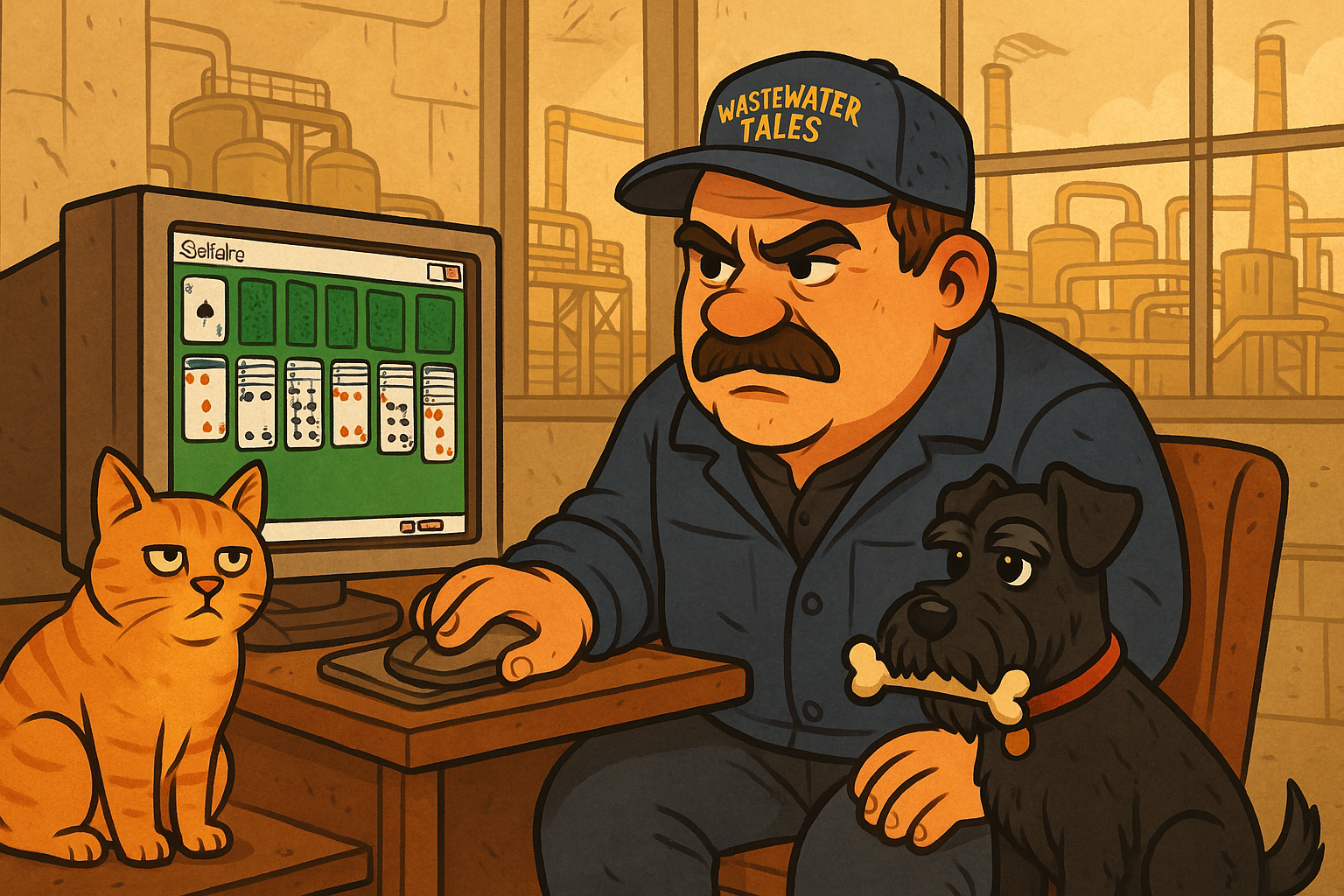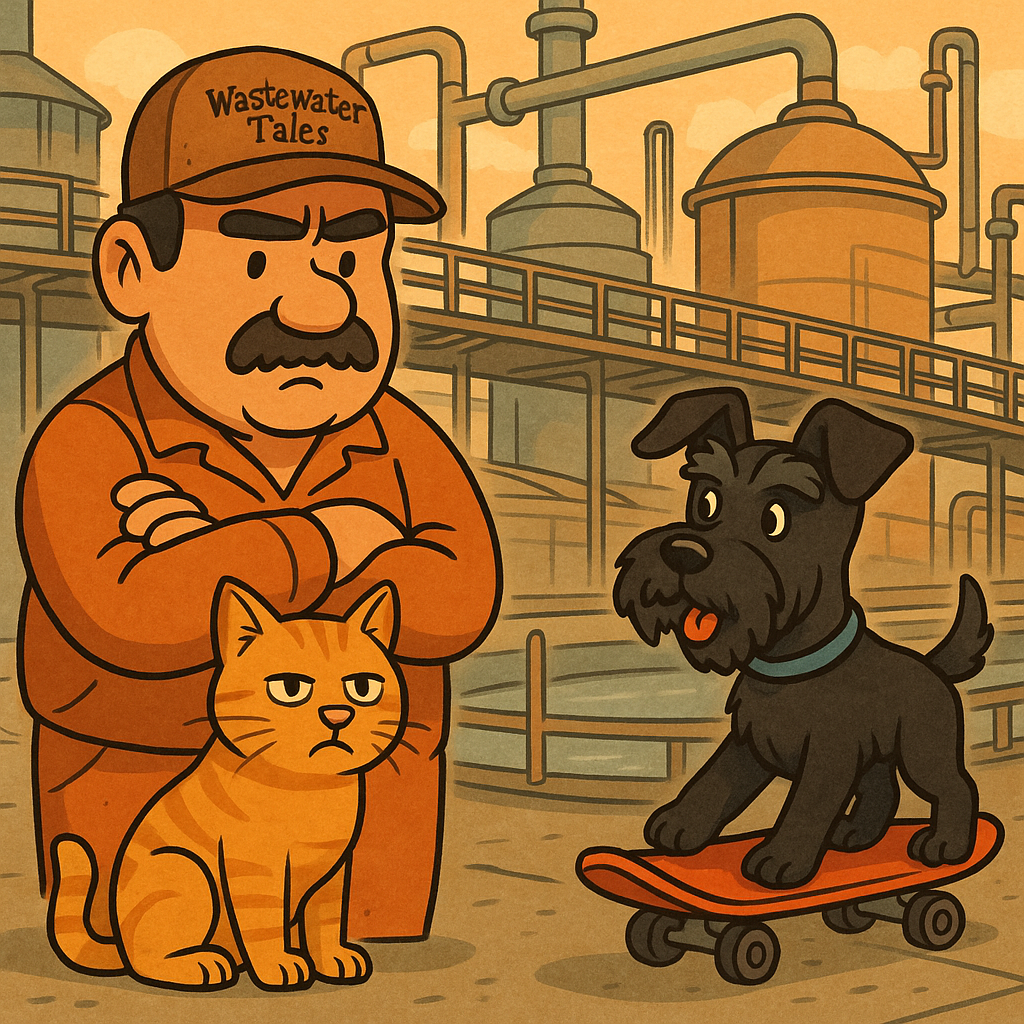🔧 Mechanical treatment - the foundation of the entire treatment plant
Although bacteria, MBR reactors, or biogas energy recovery are the most exciting aspects of wastewater treatment, the mechanical cleaning is the first and absolutely crucial stage. If this stage doesn't work well, the rest of the process can go awry faster than secondary sludge without flocculant.
🧱 Mechanical grilles - the first line of defense
The grates stop the biggest pollutants going into the treatment plant. From sticks, tissues, and packaging, to rags, plastic, and items they wouldn't even show in zombie movies.
- Coarse-grained gratings (Czechs): clearances of 20-40 mm - eliminate the largest waste, used at the inlet to the facility.
- Fine grids: Clearances of less than 6 mm - catch smaller fractions before the sandblasting unit or pumping station.
In modern installations work automatic scraper grids, brush or hook, cleaning themselves and removing screenings to a dewatering press. This minimizes manual intervention and the risk of clogged sewer lines.
⛏️ Sandblasters - a filter for the hardcore
Sand, gravel and fine mineral solids may be harmless to bacteria, but they can mess with pumps, destroy impellers and clog everything possible. That's why sand traps are used - gravity or aerated separators that eliminate the heavier inorganic fractions.
- Horizontal sand traps: classic and simple in operation, but they take up a lot of space.
- Vertical: They save space, but require precise flow control.
- Aerated: use agitation and oxygen to optimize particle fall and separate grease from surfaces.
Increasingly, sand traps are being installed in sand traps skimming pockets or scraper troughs that collect grease from the surface of wastewater even before it enters the biology.
🌀 Preliminary settling tanks - the place where wastewater "settles".
After the stage of mechanical removal of solids and sand, it's time for the sedimentation. In the primary settling tanks, wastewater flows through special chambers where finer suspended solids sink to the bottom by gravity, while grease and foam are collected from the surface.
Typical residence times of wastewater in a settling tank: 90-120 minutes. Sediment traps are most commonly used:
- Radial: flow from the inside out.
- Channel (horizontal): Laminar flow along a long basin.
- Imhoff: An integrated solution for smaller facilities.
Waste from the bottom goes to raw sludge pumps, and the grease layer from the surface is collected by overflow scrapers. Modern settling tanks are often equipped with sludge and overflow level sensors, integrated with SCADA systems.
📉 Why does it all matter?
Well-designed and maintained mechanical cleaning:
- Reduces suspended solids and BOD₅ by up to 30% Before the biological phase.
- Protects pumping and biological systems from damage.
- Minimizes the need for emergency draught cleaning.
- It improves the stability and predictability of the operation of the entire treatment plant.
This is where the first battle is fought - and if we lose it with grease, screenings and sand, the next stages will only be firefighting. And as we know - Zdzichu has only one TurboGASZZAC 5000.
📦 Innovation and development
Modern systems are increasingly using:
- Basket and step gratings With automatic flushing.
- Sieve-sandblasters As compact units for small treatment plants.
- Clogging and flow monitoring real-time.
- Integration with systems automation and SCADA.
These are no longer "simple grilles and ducts" - they are advanced engineering systems that have a huge impact on the performance of the entire facility.
☑️ Moral:
Mechanics are not the vestibule - they are the gate. And any good gate should be solid, regularly cleaned and monitored. If it collapses here - biology and chemistry can no longer be saved. You have to start from the beginning. From the bars.
☕ If this post was of value to you - put your coffee down before Zdzichu pulls another filter out of Frani:
How do you rate this story?
Click the star and rate Zdzichu!
Votes: 1 · Average: 5
No one has voted yet. Be the first!



